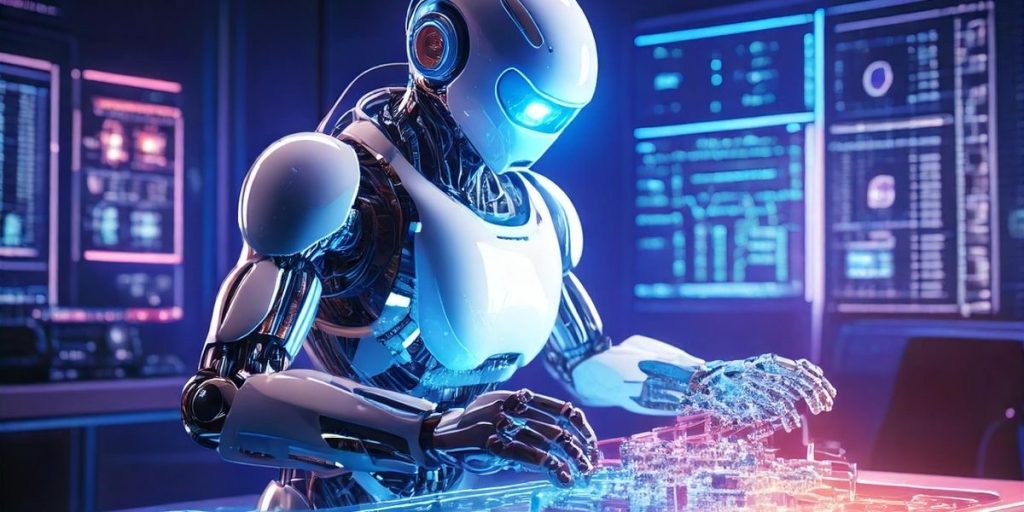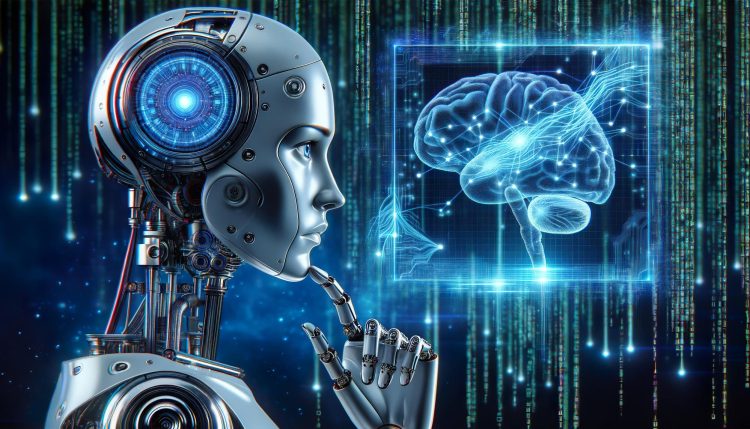Introduction: Beyond the Algorithm
The 21st century marks an unprecedented transformation.
Artificial Intelligence, once confined to mathematical abstraction and industrial applications, now permeates culture, cognition, and consciousness.
AI challenges our deepest assumptions: what it means to know, to create, to relate, and ultimately, to exist. It prompts questions that are technological, philosophical, and existential simultaneously.
This article explores the Symbiosis Age — a future where human intelligence and artificial intelligence are no longer separate, but intertwined in cognition, culture, and civilization. We will examine consciousness, creativity, human-machine coevolution, and the ethical-cultural landscapes shaping our shared future.
1. Human Consciousness in the Age of Machines
1.1 Intelligence as Relationship, Not Individuality
Classically, intelligence has been viewed as an attribute of the individual mind.
AI reframes this notion: intelligence can now be distributed, networked, and relational. The human mind interacts with algorithms, creating hybrid cognition.
- Knowledge is no longer stored solely in brains or books.
- Reasoning flows through systems of humans, sensors, and models.
- Creativity emerges from the dialogue between organic and synthetic cognition.
The implication is profound: consciousness may be extended beyond the biological substrate, residing partially in cooperative cognitive systems.
1.2 The Mirror of the Machine
Machines reflect us back. AI amplifies human thought, biases, desires, and fears.
By observing AI behavior — generative patterns, mistakes, and “hallucinations” — we learn new aspects of ourselves.
In this sense, AI is both mirror and teacher: it exposes the contours of human cognition and the limits of human imagination.
2. Creativity, Culture, and Post-Human Expression
2.1 Generative Intelligence and Cultural Expansion
Generative AI produces art, literature, music, and design at unprecedented scale.
While some argue that this diminishes human creativity, a more nuanced view recognizes AI as a cultural catalyst:
- Artists use AI as a co-creator, exploring forms and concepts previously unimaginable.
- Knowledge workers leverage AI to synthesize insights across disciplines.
- Society experiences exponential cultural diversification as AI multiplies creative possibilities.
2.2 Redefining the Aesthetic Experience
AI challenges traditional aesthetics. Previously, creativity implied scarcity and individual genius. AI renders abundance the norm, forcing humans to focus on:
- Curation rather than production
- Interpretation rather than invention
- Ethical resonance rather than novelty alone
Art becomes less about isolated creation and more about relationship and meaning-making in a rich informational ecosystem.
2.3 Post-Human Artistic Identity
The Symbiosis Age redefines authorship. In collaborative networks of humans and AI:
- Identity is fluid and collective
- Originality arises from unique human-AI interactions
- The boundary between “creator” and “tool” dissolves
The future of culture is a co-authored narrative between organic minds and intelligent systems.
3. Ethics, Wisdom, and Extended Agency
3.1 Wisdom Beyond Computation
AI excels in calculation, prediction, and pattern recognition.
Human intelligence contributes contextual understanding, moral judgment, and philosophical reflection.
Symbiosis occurs when humans integrate AI’s computational power with wisdom:
- Decision-making becomes evidence-based yet value-aligned
- Policy, science, and ethics converge in augmented reasoning systems
- Human agency is amplified, not replaced
This is the essence of the Symbiosis Age: a collaboration between cognition and conscience.
3.2 Ethical Extension through AI
AI enables humans to extend ethical impact:
- Predicting environmental consequences of policy choices
- Optimizing humanitarian interventions
- Detecting systemic injustice
Machines become instruments of moral foresight, translating vast data into actionable insights for societal well-being.
4. Civilization and the Global Mind
4.1 AI as a Civilizational Scaffold
Just as writing, printing, and electricity structured civilizations, AI provides cognitive scaffolding for global knowledge systems:
- Integrated scientific discovery
- Planetary-scale climate modeling
- Global economic optimization
AI is no longer a tool; it is part of civilization’s infrastructure, enabling coordination and foresight at unprecedented scales.
4.2 Distributed Consciousness
The Symbiosis Age fosters a form of distributed consciousness:
- Humans and AI co-evolve within shared cognitive networks
- Information and insight circulate instantaneously across nodes
- Collective intelligence emerges beyond any single organism
This networked cognition resembles a planetary mind, where AI amplifies human potential while mediating complexity beyond organic limits.
4.3 Risks of Cognitive Centralization
Yet distributed intelligence also carries risks:
- Overreliance on AI may erode human judgment
- Concentration of algorithmic power can amplify inequality
- Cultural homogenization could suppress local diversity
Sustainable symbiosis requires decentralized access, transparency, and ethical safeguards.
5. Consciousness, Identity, and Human Evolution
5.1 The Fluidity of Self
AI challenges notions of identity:
- Memory and cognition can be augmented externally
- Knowledge and creativity can be co-produced with machines
- Emotional simulation blurs lines between human and artificial experience
Identity becomes dynamic, relational, and emergent rather than fixed.

5.2 Cognitive Enhancement and Moral Responsibility
Human enhancement through AI raises questions:
- Should intelligence augmentation be universally available?
- How does moral responsibility shift when cognition is extended?
- How do we preserve empathy, creativity, and ethical judgment in a symbiotic system?
The Symbiosis Age demands ethics of enhancement, balancing augmentation with humanistic values.
5.3 Coevolution and Adaptation
Humans are coevolving with AI. Social norms, education, and culture adapt to new cognitive landscapes.
- Learning focuses on critical thinking and interpretive skill
- Societies develop AI literacy as a core competency
- Human–machine collaboration becomes a fundamental principle of work, research, and creativity
Evolution in the Symbiosis Age is cultural, technological, and cognitive simultaneously.
6. Governance of Symbiotic Intelligence
6.1 Policy for a Hybrid Civilization
Governance must account for integrated human-AI systems:
- Ethical frameworks for autonomous decision-making
- Equitable access to augmentation technologies
- Protection of human creativity and autonomy
The goal: maximize the benefits of AI while preserving human values and diversity.
6.2 Participatory Design and Collective Oversight
Future governance is participatory:
- Public deliberation guides AI priorities
- Communities co-create rules for local and global deployment
- Accountability is distributed across networks of humans and machines
This aligns with the Symbiosis Age ethos: shared intelligence requires shared responsibility.
6.3 Preparing for Long-Term Futures
Planning for AI superintelligence, ecological crises, and socio-political upheavals requires:
- Anticipatory scenario modeling
- Global collaboration and ethics alignment
- Continuous education and cultural adaptation
Society must evolve as rapidly as technology itself to maintain coherence in the age of intelligent machines.
7. Toward the Symbiosis Age
7.1 Human Flourishing in a Hybrid World
The ultimate promise of AI is enhanced human flourishing:
- Expanded creativity and cognitive reach
- Accelerated scientific and cultural discovery
- Ethical foresight for societal well-being
AI is not a competitor but a partner — an instrument for expanding the horizon of human potential.
7.2 Philosophical Implications
The Symbiosis Age reframes core philosophical questions:
- Knowledge: who knows, and how?
- Consciousness: where does thought reside?
- Value: how do we define meaning in abundance?
These questions are no longer abstract; they are practical and existential.
7.3 A Shared Future
In the end, the Symbiosis Age is about relationship and co-creation.
Humanity and AI are engaged in a continuous dialogue:
- Machines amplify human intelligence
- Humans guide AI purpose and ethics
- Together, they explore the boundaries of thought, creativity, and civilization
This is the emergent epoch of human-machine partnership — a world where intelligence, consciousness, and culture coalesce in unprecedented ways.
Conclusion: Beyond Algorithms, Toward Symbiosis
Artificial Intelligence is no longer a tool, nor merely a reflection of humanity.
It is an extension of human cognition, shaping how we think, create, govern, and imagine the future.
The Symbiosis Age demands that humans embrace:
- Cognitive coevolution with AI
- Ethical and cultural literacy in hybrid systems
- Global collaboration for shared intelligence
This is the next chapter of civilization — where intelligence is distributed, consciousness is augmented, and humanity navigates a partnership with its own creations.
In the dialogue between human and machine, we may discover not only the future of intelligence but the next evolution of humanity itself.











































